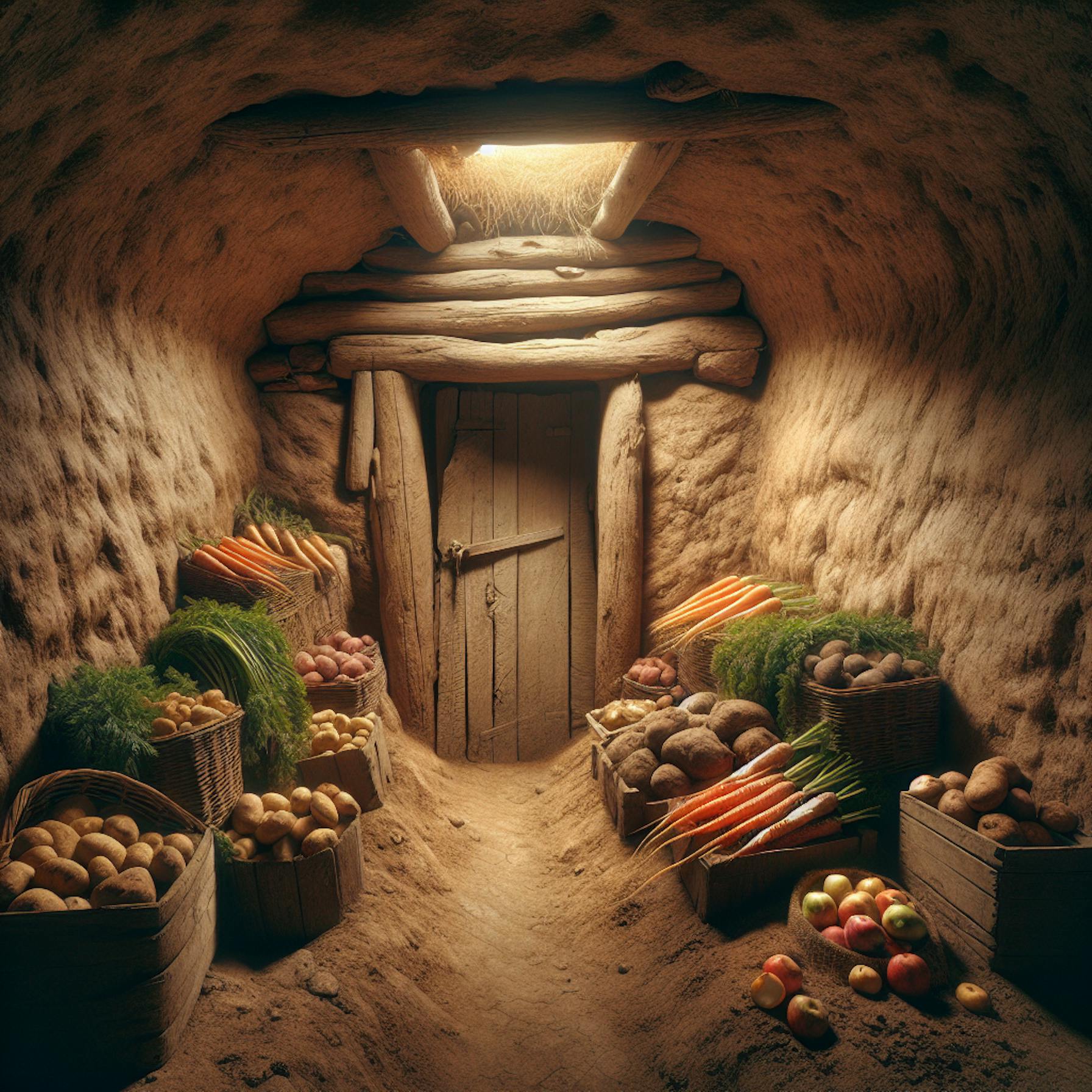
 Broderick Adams
Broderick AdamsThis week, we’re taking a step beyond mushrooms and brassicas to explore a practice that has sustained gardeners and farmers for centuries: overwintering vegetables. Far from being a modern innovation, overwintering has deep roots in agricultural history — and today, it remains a powerful way to extend the harvest, protect crops, and set the stage for success in the spring.
A Brief History of Overwintering
Long before cold frames and greenhouses, growers across the world found ways to keep vegetables alive through the winter months.
Europe: Farmers in Northern and Eastern Europe were some of the first to practice overwintering root crops. Archaeological evidence suggests that Iron Age communities stored carrots, parsnips, and beets in pits lined with straw and soil, keeping them edible well into winter. By the Middle Ages, root cellars became common throughout Scandinavia, Germany, and Britain — simple underground storage spaces that kept potatoes, turnips, and carrots from freezing. These traditions made root vegetables dietary staples during long winters.
Asia: Chinese farmers practiced winter storage of radishes and turnips as early as 500 BCE, often burying them in sand or earthen pits. Cold-hardy greens were also protected with straw mats or simple covers.
France: By the 1500s, market gardeners in France developed the glass cloche — a bell-shaped cover placed over individual plants to shield them from frost while still capturing sunlight. These cloches became so essential to year-round vegetable growing that they spread across Europe, influencing the development of more advanced cold frames and greenhouses.
North America: Indigenous communities had their own methods of preserving and overwintering roots. Tribes of the Great Plains and Northeast buried turnips, Jerusalem artichokes, and other native tubers in cache pits to maintain food supplies through winter. Corn, beans, and squash were stored alongside them as part of a diversified seasonal system.
Overwintering was never about outsmarting nature — it was about working alongside it. Root vegetables, with their natural ability to store sugars underground, and protective tools like cloches became the backbone of these strategies, ensuring food security when fresh greens were scarce.
Why Overwinter Vegetables Today?
For today’s gardeners, overwintering offers both practical and flavorful rewards:
Extended harvests – Hardy crops like spinach, kale, garlic, carrots, and onions can keep producing or hold in the soil through the cold.
Improved flavor – Some vegetables actually sweeten after a frost, especially carrots, kale, and Brussels sprouts.
Early spring growth – Overwintered crops like garlic, onions, and fava beans often take off quickly once temperatures warm, giving you a jump on the season.
Resilience – Overwintering can reduce pest pressure, conserve resources, and diversify harvests in unpredictable climates.
Modern Overwintering Techniques
Today’s gardeners have tools and methods that make overwintering easier and more accessible than ever before. Here are a few of the most effective approaches:
Mulching: A thick layer of straw, leaves, or wood chips can insulate root crops like carrots and beets, keeping them harvestable through the winter.
Row Covers: Lightweight fabric protects crops from frost, wind, and pests while still allowing light and water to pass through.
Low Tunnels: Made with hoops and plastic or frost cloth, these mini-greenhouses create a pocket of warmth over beds of greens, brassicas, and herbs.
Cold Frames: Essentially small, bottomless boxes with a transparent lid, cold frames capture solar heat and shield delicate crops. They’re perfect for spinach, lettuce, and scallions.
Cloches (Old and New): The classic French glass bell cloche is still used today, though modern versions are often made of plastic or polycarbonate. They remain a simple, elegant way to protect individual plants from frost while boosting warmth and growth.
Unheated Hoop Houses (High Tunnels): Larger versions of low tunnels, hoop houses give serious season extension, allowing gardeners in colder zones to overwinter a wide range of crops.
Root Cellaring: While not in the garden itself, modern versions of the old root cellar — cool basements, outdoor pits, or even insulated bins — remain one of the best ways to keep potatoes, carrots, and turnips fresh for months.
By combining these methods with smart crop selection, gardeners across the country can adapt overwintering to their climate and goals.
What Overwintering Looks Like Across the Country
The exact methods and crops for overwintering depend heavily on your growing zone:
Milder regions (Zones 7–9): Gardeners can keep greens, brassicas, and root crops alive in the ground with minimal protection, sometimes harvesting year-round.
Colder regions (Zones 5–6): Row covers, mulch, or unheated hoop houses help keep soil insulated and extend the season for hardy crops.
Northern climates (Zones 3–4): Overwintering often focuses on garlic, perennial vegetables, and storage crops — with cold frames or insulated greenhouses making the difference.
Wherever you garden, there are overwintering techniques that can fit your climate and your goals.
Wrapping Up
Overwintering vegetables is a tradition with deep historical roots, and today it’s as relevant as ever for gardeners who want to extend their seasons and bring fresh, resilient harvests to their kitchens.
We’d love to hear from you: What do you want to know about winter gardening? Are there specific challenges you’d like us to cover or crops you’re curious about? Drop us a comment or message — your questions help us grow this community together.
Stay connected with us for more tips, seasonal updates, and growing inspiration:
👉 Facebook: facebook.com/emorymarketgardens
👉 Instagram: instagram.com/emorymarketgardens
From our garden to yours — here’s to thriving gardens, even in the heart of winter. 🌱❄️